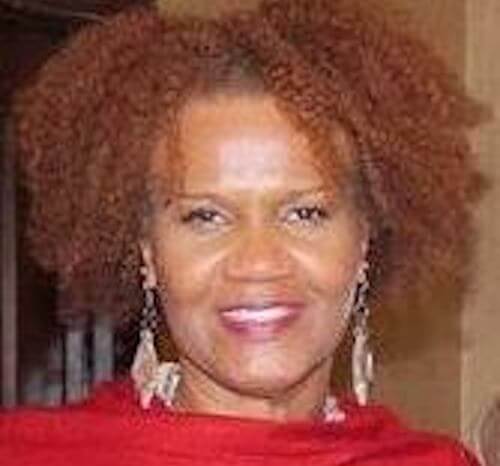From afros to cornrows and twists to free-flowing tresses, the natural hair movement has experienced its share of changes over the years. However, there's one thing that has not changed — the level of care natural hair needs.
The truth is that those envious and fashionable natural hairstyles require a lot of attention, including the added responsibility of preventing the dreaded “natural hair breakage.” Read on to find out more about natural hair breakage and natural hair care tips, including what products you should really be using to combat hair breakage.
#include-related-slider#
What Is Natural Hair?
Natural hair is hair in its natural state — hair that hasn’t been chemically straightened with a relaxer (sometimes loosely called a perm).
When a Black person is “going natural,” it means they are transitioning from relaxed hair to natural hair, which can take time. Some women cut their hair to speed up the process, also referred to as “a big chop.”
Depending on how you look at it, maintaining good, healthy natural hair can be laborious.
What Is Natural Hair Breakage?
"Breakage" describes what happens when hair strands snap under strain, meaning a part of the length of that strand is lost, but the strand remains on your scalp. There is a distinct difference between hair breakage and hair loss or shedding. Broken hairs will be shorter than the normal length of your hair. They will also lack the small white bulb on the end of the hair, which you typically only see with hair loss or shedding.
Shop: Shea Whitney's VEGAMOUR Picks
What Causes Natural Hair Breakage?
According to researchers at Johns Hopkins, a common cause of hair loss and breakage, known as acquired trichorrhexis nodosa, or TN, which is often more prevalent in Black people, can actually be remedied through the appropriate use of cleansing products, hair care and styling practices.
In fact, natural hair breakage can result from a general lack of proper care.
“It could be dryness,” said Rayne Brooks, the owner of Sekai Natural Hair Gallery in Los Angeles. “Dryness is a common issue. Too much blow-drying can harm your hair. Dryness will make it brittle."
Brooks also said that not exercising patience and care when detangling the hair can cause breakage. "Some women don't know how to detangle natural hair," she said. "There is too much improper detangling. They rip through the hair to detangle."
Read More: How Stress-Induced Hair Loss Impacts Black Women
Tips To Avoid Natural Hair Breakage
There is no way to completely stop hair breakage, but any breakage that occurs shouldn't be overwhelming. If your hair is constantly breaking, consult with a professional to help you identify and treat any underlying causes. And while it's true that, no matter what, you won't be able to completely stop breakage, you can definitely get to a place where your hair is suffering much less breakage through these helpful prevention tips.
Consider Protein Treatments
To stop natural hair breakage from continuing, Brooks suggests using protein treatments.“That’s if you can take protein,” she said. “Protein makes [the hair] stronger, but also dry. Everyone’s hair is different."
It's important to maintain the right moisture/protein balance when it comes to your hair. To help, consider our GRO Revitalizing Shampoo & Conditioner Kit. These nourishing formulas utilize the power of microencapsulated vegan b-SILK™ protein, which bonds to hair follicles and remains wrapped around strands even after you rinse, resulting in a chemical-free keratin hair treatment. Plus, the formulas include wild harvested marula oil, organic murumuru butter and ximenia oil, which help condition and hydrate your strands while fighting damaging free radicals.
Dry Hair Gently
Towel material snags and pulls on your hair and is especially harmful to curly hair. You’ll see your breakage drop significantly once you switch over to a microfiber towel. Even then, don't rub your hair. Instead, blot it.
Don't Detangle Dry or Sopping Wet Hair
Detangling can cause breakage, especially if you tug too hard or detangle when your hair is dry. Hair is the least elastic when it’s dry and most fragile when it’s sopping wet. Avoid combing or detangling (don't even finger detangle) when your hair is in either state because detangling puts tension on your hair and makes it vulnerable to breakage. Experts recommend combing or detangling your hair when it is damp with a wide-tooth comb.
Here's How: Detangle Hair With Minimal Damage
Avoid Overuse of Heat
Heat sucks the moisture out of your hair, making it more susceptible to breakage. The use of hot tools, such as a flat iron, blow dryer, hair steamer, curling iron and pressing comb, is popular but often leads to serious hair damage because their high temperatures can result in brittle, dry hair that breaks easily — especially when overused. Instead, opt for heatless styling options whenever you can.
Deep Condition
A weekly deep conditioning treatment can work wonders on damaged hair and help prevent and reduce breakage. Simply apply your favorite hair mask to towel-dried hair from roots to ends and leave on as directed to deeply hydrate and protect damaged hair while reducing frizz. Cover your hair with a shower cap or bonnet until you're ready to wash the hair mask out.
Avoid Toxic Ingredients
There are some hair products that contain damaging ingredients that dry out your hair and make it less elastic. Harsh chemical treatments, like hair dyes, relaxers and texturizers, can strip your hair of moisture and its natural curl pattern. Additionally, many drugstore shampoos contain ingredients you should avoid for the health of your hair.
Seal Hair Ends
To prevent hair breakage, give your ends special attention with moisture. After all, your ends are the oldest and most vulnerable part of your hair. Marula Oil is a good choice to seal hair ends.
Avoid Tight Hair Styles
“Tension is bad, especially constant tension," said Brooks. "You can’t keep pulling [your hair] back into a ponytail. Wear it loose and not tight. We are so conditioned to think if it's not tight, it’s not right. Get away from that. It can and will break your hair if it's too tight."
Tight hairstyles that can cause breakage include ponytails, box braids, Bantu knots, afro puffs, twist-outs, spring twists and passion twists. It can also include wash-and-go styles. Choose low manipulation styles more often to avoid the risk of stress and breakage.
Protect Your Hair At Night
Satin scarves and bonnets are your best friend, but your pillowcase also matters. Pillowcases are usually made of cotton, which can cause dryness, breakage and split ends. Instead, opt for our a pillowcase is designed to reduce hair and skin friction and preserve the volume, length and style of your hair while you sleep.
Don't Pull Out Knots
There are times when you find single-strand knots at the ends of your hair. What to do? Do not pull them out because it will create split ends.
The knots come from friction, hair manipulation and your hair growing and looping around itself. To get rid of them, you should detangle them or cut them. Do not pull them.
Also: How to Moisturize Dry Hair
Don't Neglect Your Hair
We’re all busy, but no matter your hair type, it’s still important to keep up your hair routine. If you can’t keep it up, opt for protective styles, like twists or braids to minimize hair breaks, knotting and tangling.
#include-related-slider#
In the End
When it comes to dealing with natural hair breakage, always think about the best things you can do to support the wellness of your hair. There is no “one size fits all” conclusion. It all comes down to learning about and loving your hair and supporting healthy hair growth — all with the goal of achieving healthy, shiny natural hair that's free of breakage.
More From VEGAMOUR
- 33 Protective Styles for Natural Hair
- How to Plop Curly Hair
- How Does VEGAMOUR Shampoo & Conditioner Stand Up to Curls?
- These Shampoo Ingredients Might Contribute to Hair Loss
Photo credit: Jeffery Erhunse/Unsplash
Back



















